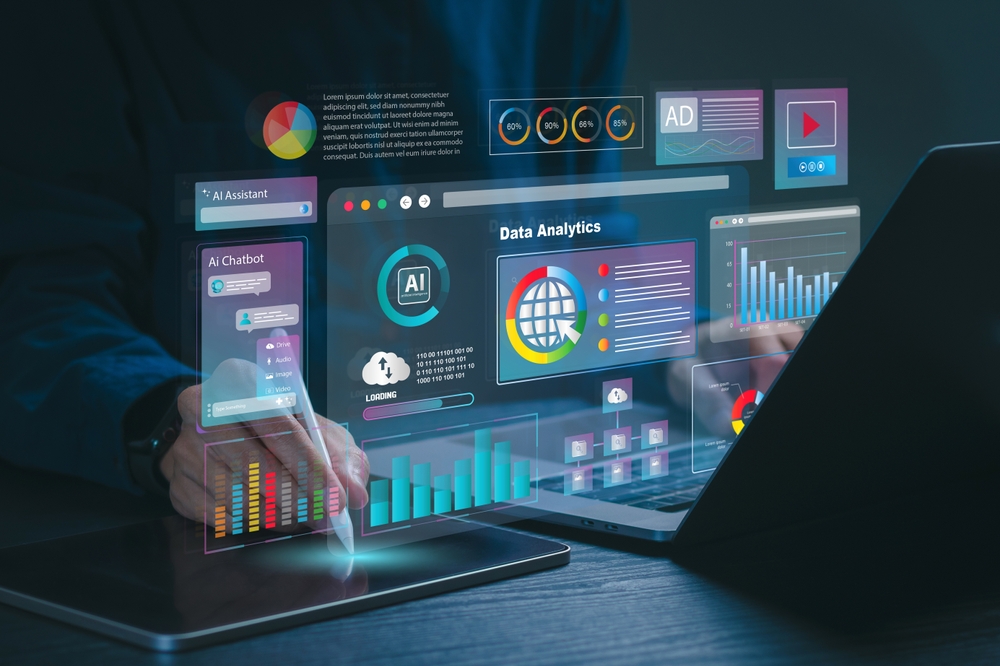
About Us
WebDesignVR works with both small and large companies to provide them with one-of-a-kind professional solutions for their businesses.
View More
WebDesignVR works with both small and large companies to provide them with one-of-a-kind professional solutions for their businesses.
View More
05 Aug 2025 Digital Marketing Emma Adamson
Artificial Intelligence (AI) is transforming every shade of digital marketing USA, from automation and customer segmentation to predicting and analyzing customer behavior into a personalized experience. And so, as AI adoption grows, agencies and businesses in the US continue to find problems with the technology.
The following article discusses the five major things that immediately come to mind when thinking about AI in digital marketing, and more importantly, how to deal with the challenges. Whether you are a startup or an enterprise brand, knowing these challenges will help you employ AI in your marketing workflow more effectively.
AI thrives on data. However, if your data lacks consistency, completeness, or accuracy, the most sophisticated machine learning models will be incapable of producing meaningful results.
AI systems depend on timely, accurate, well-organized data in order to perform well. In reality, however, most marketing teams find themselves dealing with the chaos of outdated CRM records, inconsistent tagging, and incomplete customer journeys. This is so-called "bad data quality," which turns into a real problem for good AI functioning. It causes incorrect predictions, inappropriate targeting, and wasted funding. For example, if your customer data is filled with duplicate or outdated email addresses, your AI won't be able to deliver relevant offers or segment accurately.
Without quality data, even the smartest AI is blind.
Bias within AI systems is frequently not recognized until it's too late. AI bias happens by employing training data that repetitively and inadvertently promotes stereotypes or excludes identifiable, definable audiences.
Bias in AI happens when algorithms reiterate, sometimes exaggerate, social and cultural bias relating to the definitions of the training data. In marketing, bias might manifest as certain audiences or groups of audience being inadvertently left out or a bias towards a particular demographic. Bias erodes trust and leads to campaigns that appear tone-deaf or unfairly present human experience. If your AI in digital marketing USA has been trained to primarily recognize male user data, there’s an opportunity that your next campaign will feature white, male behavior or interest, under-representing female behaviors/interests in targeting ads.
Removing bias is not a one-time activity; it is an ongoing project.
Personalization is one of AI’s greatest strengths. But when it crosses the line into over-personalization, it can make users feel uncomfortable or even surveilled, becoming one of the AI limitations.
AI allows us to personalize content down to the user's last click, but that can feel invasive. Personalization leads to the user feeling "watched," which creates discomfort and raises issues of privacy. A product ad that appears seconds after the user has viewed it once has the potential to feel creepy (rather than convenient).
AI is meant to be helpful, not intrusive.
While AI is great at marketing automation and analysis, it is still lacking in creativity. Building unique brand voices, emotional storytelling, and campaigns that reflect cultural nuances are things best done by the human brain.
AI can generate headlines, product descriptions, and social media captions, but creativity is more than syntax and structure. It’s about evoking emotion, building narrative, and responding to cultural shifts. AI lacks the human intuition and storytelling finesse that makes content resonate on a deeper level. As a result, AI-generated creative often lacks soul and spontaneity, resulting in robotic or repetitive messaging.
AI in digital marketing is good, but creativity is still where humans shine.
Most AI tools never fully integrate into an existing marketing workflow because they operate in a silo.
There are many AI tools that work well on their own, but are clunky to integrate as a part of a marketing team's day-to-day workflow. Whether a predictive analytics engine or a chatbot generator, it’s important that the adoption for digital marketing USA teams does not compromise their use for ease and efficiency. It is even worse when the tool creates a pipeline silo, which defeats the purpose of marketing automation. With the goal of speed and scalability, siloed systems become cumbersome to use.
A tool that doesn't connect is money wasted.
There is no magic bullet with AI, but if you can combine your efforts with AI, it can provide tremendous value for growth. The key is to recognize the AI limitations & ethical ways of using AI to augment and enable human-machine collaboration.
Digital marketing USA is moving quickly, and businesses that anticipate AI challenges and move quickly will be positioned to take the lead. Whether you're tweaking your personalization strategy or implementing automation tools, taking a valuable approach will pay off.
Agencies like WebdesignVR make it easy for businesses across the US to embrace these challenges. With their experience in marketing automation, data strategy, and web development, the team is making sure that AI is being implemented responsibly and efficiently for brands.
If you're ready to secure and future-proof your AI in digital marketing USA today, WebdesignVR is a trusted partner in making AI work for your brand.

Lorem Ipsum has been the industry's standard dummy text ever since the 1500s, when an unknown printer took a galley of type and scrambled it to make a type specimen book.